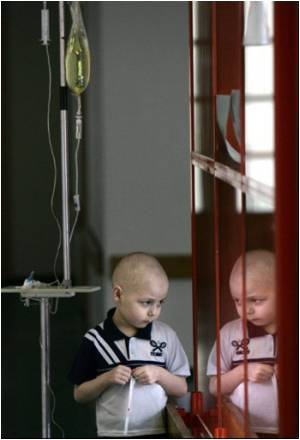The tumor suppressant gene TP53 has been found to be mutated in 90 percent of osteocarcomas, suggesting gene alteration plays a key role in early development of cancer, found by researchers.

"Osteosarcoma treatment has remained largely unchanged for more than 20 years, and cure rates are stalled at about 70 percent. This study lays a foundation for new therapies and more immediately identifies numerous mutations in TP53 missed by previous studies that did not include whole genome sequencing," said co-corresponding author Michael Dyer, Ph.D., a Howard Hughes Medical Institute investigator and member of the St. Jude Department of Developmental Neurobiology. Jinghui Zhang, Ph.D., member of the St. Jude Department of Computational Biology, is the other corresponding author.
TP53 carries instructions for assembling the p53 protein, which plays a role in DNA repair and cell death. Inactivation of p53 helps tumor cells survive radiation therapy. Previous studies estimated that TP53 was mutated in a quarter to half of osteosarcomas, suggesting that a significant proportion of patients with this tumor should respond to radiation. That was not the case, Dyer said.
"With whole-genome sequencing, we are gaining new insights into the way various mutations in TP53 promote the development of osteosarcomas," said co-author Richard K. Wilson, Ph.D., director of The Genome Institute at Washington University School of Medicine in St. Louis. "This information will be very helpful in designing treatment protocols."
The study involved whole genome sequencing of 34 osteosarcoma tumors from 32 patients. The patients' normal genomes were also sequenced.
The research revealed that 55 percent of TP53 mutations were caused by structural variations. These alterations occur when chromosomes break and are reassembled. Osteosarcoma is just the second cancer with TP53 mutations resulting from chromosomal rearrangements rather than point mutations, which are small changes in the DNA that makes up the gene. "This suggests that the cell that gives rise to osteosarcoma may either be particularly susceptible to chromosomal breaks or better able to tolerate breaks when they occur," Dyer said.
Advertisement
Half the tumors also included unusually large numbers of DNA point mutations that were clustered near chromosomal breaks. This localized hypermutation, known as kataegis, was first identified in 2012 in breast cancer. The hypermutated regions identified in this study did not include TP53, ATRX or other genes frequently altered in osteosarcoma, but Dyer said the finding is another indication of the genome instability that is a hallmark of this cancer.
Advertisement
The test was developed by Armita Bahrami, M.D., an assistant member of the St. Jude Department of Pathology. She and Xiang Chen, Ph.D., a staff scientist in the Computational Biology department, are the paper's co-first authors.
The study was part of the Pediatric Cancer Genome Project, which was launched in 2010 to harness advances in genome sequencing technology to improve understanding and treatment of some of the most aggressive and least understood childhood cancers. Since then, the project has sequenced the complete normal and tumor genomes of 700 young cancer patients.
Source-Eurekalert













